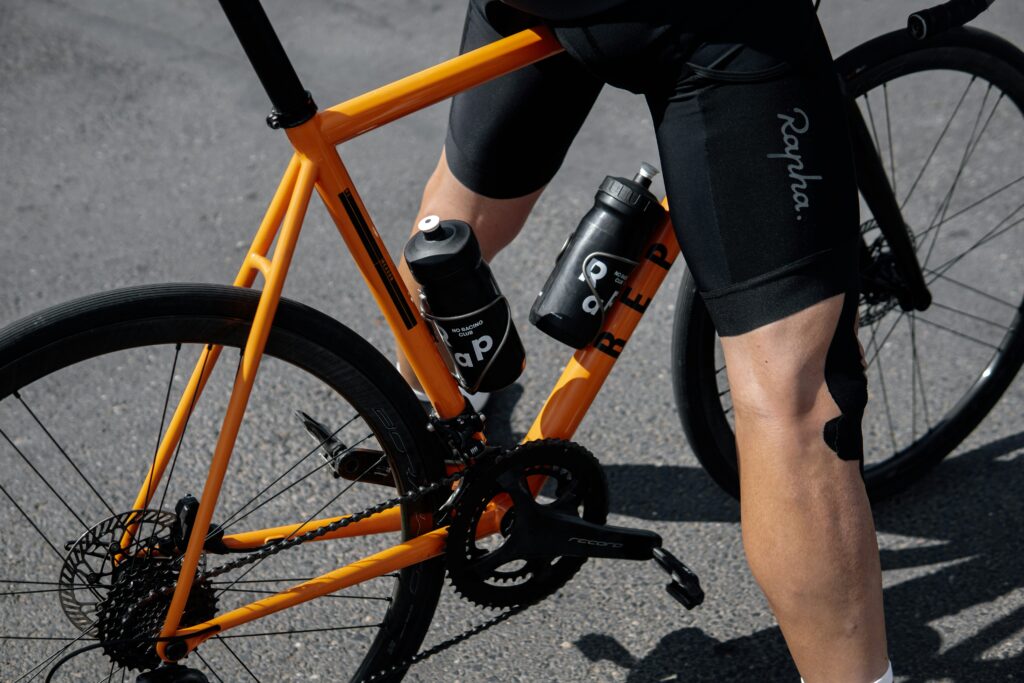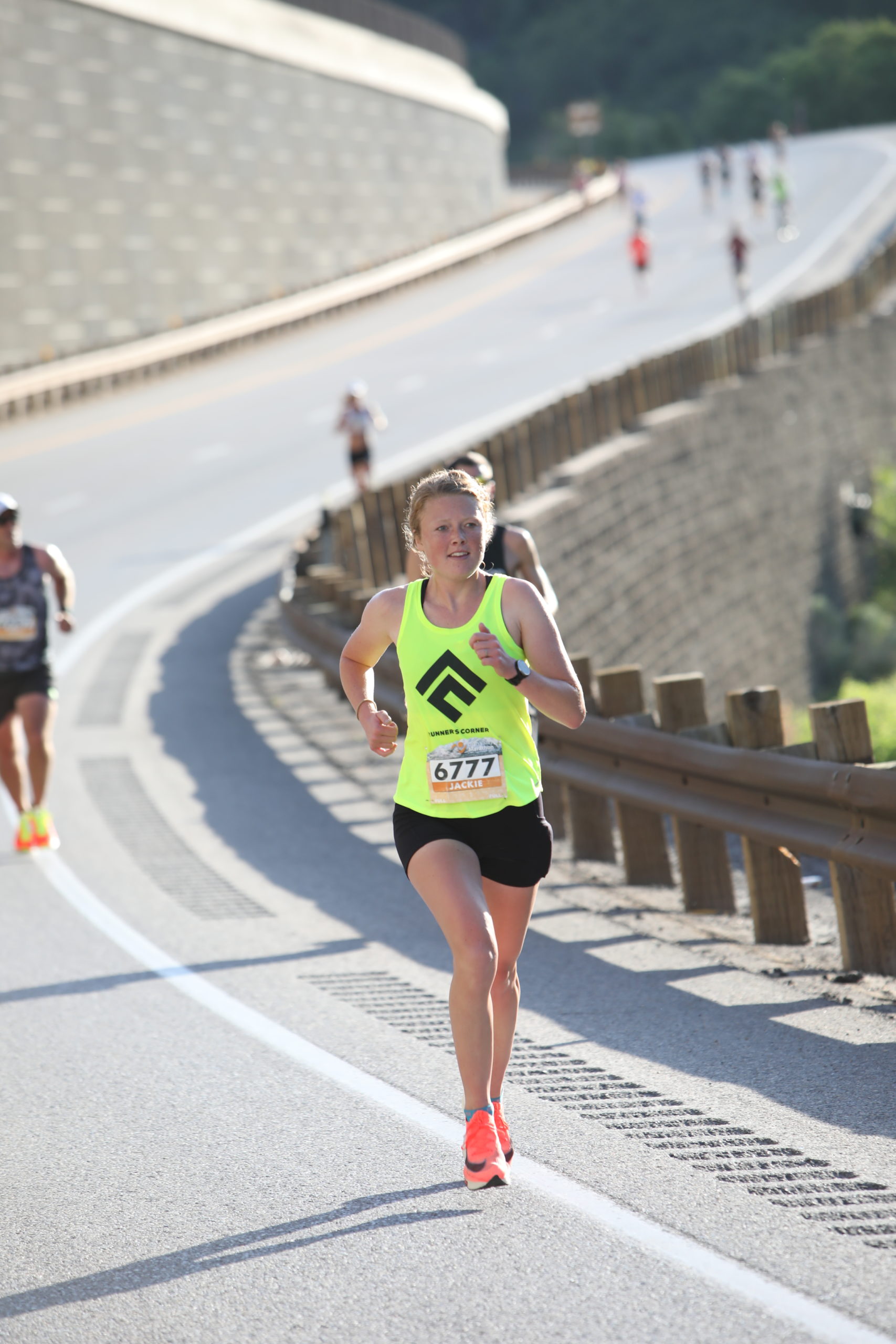Fueling the Distance: A Guide to Endurance Nutrition

If you’re training for an upcoming long-distance run or triathlon, it’s time to start practicing optimal fueling strategies for race day. When you’re fueling for the distance you’re running there are a number of variables you must account for. Here’s a simplified guide of what to focus on first.
#1 Eating Enough
This principle applies not only on race day, but on every day leading up to race day. Eating enough to support your training load is the absolute best thing an athlete can do for their performance. No other nutrition strategy will be able to make much of a difference if your body is trying to perform in a depleted state.
As you meet your energy needs on a daily basis, you will be able to better avoid injuries, recover from workouts, feel strong during your workouts, and have a working gut that is able to tolerate the fuel you give it on race day. Learn more about strategies to help you meet your daily needs here.
#2 Carbs
Carbohydrates are the body’s preferred source of energy. They are the easiest and most efficient nutrient for our body to break down, so naturally, it is the nutrient that is most needed when we are asking our body to run, bike, or swim at its full potential.
Taking in carbohydrates during an endurance race or workout lasting longer than 60 minutes is recommended in order to provide the body with enough fuel to avoid a bonk, or depletion in carbohydrate energy stores in the body.
PER HOUR, endurance athletes should aim for these ideals when taking in carbohydrates:
<60 minutes → no fuel required
1 hr – 2 hr → aim for 30-60 grams of carbohydrate per hour
2 hr – 3 hr → aim for 60-70 grams of carbohydrate per hour
3 hr – 5 hr → aim for 60-90 grams of carbohydrate per hour
5 hrs + → aim for 90 (up to 120) grams of carbohydrate per hour
If you have a sensitive gut and these numbers feel out of reach, start small and slowly build your tolerance to handle fueling within optimal ranges.
Athletes can meet these carbohydrate requirements with a variety of products: ‘real food’ (i.e. applesauce, bananas, potatoes, etc.), gels, chews, gummy candies, or high carbohydrate beverages. Experiment with different products to find what works best for you.
#3 Sodium
While exercising, endurance athletes lose a large amount of sweat. Sweat contains fluid & electrolytes, both of which need to be replaced in order to avoid dehydration. Sodium is the most prominent electrolyte lost in sweat, so that is the particular electrolyte we focus on tracking in endurance athletes.
Generally speaking, most athletes can adequately replenish sodium losses by consuming 300-600 mg of sodium per hour of activity. If you find that you are a salty sweater, aim for the higher end of the range. If you are not a heavy or salty sweater, the lower end of the range is likely appropriate. Adjust your intake accordingly.
There are a variety of gels, chews, and drink mixes that can reliably help you meet your hourly sodium needs. Salt capsules and tabs are another way to get more sodium in, and may be particularly helpful if you are a very salty sweater.
ADVERTISEMENT

#4 Hydration
When replenishing fluid lost from sweat, athletes should aim for an average of 400-800 mL per hour, or close to 12-24 oz of liquid. This number will change from person to person, and also vary depending on the weather, humidity, and intensity of the event.
The trickiest thing with fluid intake during a race is finding a way to get enough without having to stop for excessive amounts of time at aid stations. Depending on the race and your personal needs/preferences, you may opt to carry your own water to guarantee getting enough.
#5 Caffeine
Caffeine is a well-researched aid for performance for endurance athletes. Caffeine delays your perception of fatigue, thus allowing you to push further and faster for a longer period of time than what you normally would be able to do.
While beneficial, caffeine can also have negative side effects, namely gastrointestinal discomfort, that may outweigh the benefits. Be sure to practice with caffeine in your training so you know what to expect come race day.
For athletes that consume caffeine on a regular basis, aiming for 3-6 mg of caffeine per kilogram of body weight is an appropriate guideline. For athletes that do not consume caffeine regularly, doses closer to 1-2 mg of caffeine per kilogram of body weight will likely be sufficient.
Most caffeine products take 60 minutes to peak in the bloodstream. Consume your largest dose of caffeine 60 minutes before you need the boost the most. In long endurance events, like the marathon, you may want to consume your caffeine 60 minutes before you hit mile 18-20 in the marathon. In shorter events, like a 10k, it would be advisable to to take your caffeine 60 minutes before the race starts.
Considerations For Different Distances
Using a ‘per hour’ approach to fueling helps athletes carry over their fueling plans to races of different durations with ease. However, a few aspects of these fueling plans may change depending on the race and distance itself.
Races of higher intensities may cause more GI distress than races of lower intensities, thus changing the volume of fluid & carbohydrate that can be tolerably ingested. Typically the more in control of your pace you feel, the more carbohydrate your gut will be able to handle. Additionally, different sports tend to have different tolerance levels for fueling. Fueling while biking tends to be more comfortable and tolerable than fueling while running.
Racing in a one sport race (i.e. marathon) will have a different fueling plan than a multi-sport race (i.e. triathlon) in general, since it’s nearly impossible to fuel during certain events, like the swim. Further, marathons with consistent aid stations will provide different fueling opportunities than a trail ultra where the aid stations are more sporadic based on ease of getting fuel to different locations on the mountain. Practice your fueling in the same way you plan to race it.
Lastly, remember to ‘fuel for the work required.’ The longer and harder the effort, the more fuel your body will need to finish it. The same fueling plan and products that work for a victorious half-marathon finish will likely be inadequate when racing your first ultra.
Wrapping It Up
While fueling for a long distance endurance race can seem complicated, narrowing your focus to these main principles will greatly improve your success. Start with general recommendations and adjust according to your body’s personal response to them. Experiment with a variety of fueling products and ways to carry it all.
Happy fueling!
References
- Holtzman B, Ackerman KE. Recommendations and Nutritional Considerations for Female Athletes: Health and Performance. Sports Med. 2021 Sep;51(Suppl 1):43-57. doi: 10.1007/s40279-021-01508-8. Epub 2021 Sep 13. PMID: 34515972; PMCID: PMC8566643.
- Logue DM, Madigan SM, Melin A, Delahunt E, Heinen M, Donnell SM, Corish CA. Low Energy Availability in Athletes 2020: An Updated Narrative Review of Prevalence, Risk, Within-Day Energy Balance, Knowledge, and Impact on Sports Performance. Nutrients. 2020 Mar 20;12(3):835. doi: 10.3390/nu12030835. PMID: 32245088; PMCID: PMC7146210.
- Rosenbloom, C. Sports Nutrition: A Practice Manual for Professionals. 5th Edition. Academy of Nutrition and Dietetics. 2012.
- Cermak NM, van Loon LJ. The use of carbohydrates during exercise as an ergogenic aid. Sports Med. 2013 Nov;43(11):1139-55. doi: 10.1007/s40279-013-0079-0. PMID: 23846824.
- Vitale K, Getzin A. Nutrition and Supplement Update for the Endurance Athlete: Review and Recommendations. Nutrients. 2019 Jun 7;11(6):1289. doi: 10.3390/nu11061289. PMID: 31181616; PMCID: PMC6628334.
ADVERTISEMENT

Jackie Hendrickson RD, MPH is a registered dietitian with a Masters Degree in public health nutrition from Utah State University. Jackie is the owner of Enduura Nutrition and loves coaching her athletes to their athletic potential through sustainable training & nutrition principles. She is an avid road & trail marathoner with a background in collegiate track, cross country, and competitive swimming. Jackie and her husband, Adam, were teammates in college and continue to pursue their running goals together. They live in beautiful Ogden, Utah with their 2 year old son, Lincoln.









